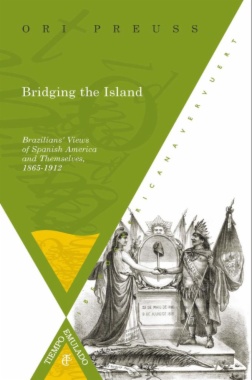

Bridging the Island explores the interplay between Brazilian interpretations of the national Self and the Spanish-American Other during the critical years spanning the demise of slavery and monarchy, the two central institutions that set Brazil apart from the countries surrounding it for decades in the nineteenth century. Their fall led to the discovery and construction—both hopeful and fearful, conscious and unconscious—of sameness with Brazil’s neighbors, grounded in shared historical experiences and common fates. What emerged was a Janus-faced “Latin America” associated with Western-style "order and progress” as much as with autochthonous caudillism and backwardness. Shifting attention away from relationships between the Latin American periphery and the North Atlantic center to transnational gazes and dialogues within Latin America, this book makes an original contribution to the intellectual history of Brazil, and opens a fresh perspective on the fashioning of collective identities in the region as a whole.